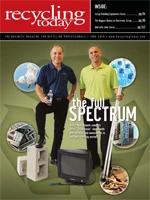
It is disconcerting to learn through our organizational research and that of others that the percentage of actively engaged employees across organizations is fairly low and remains relatively static at between 21 and 29 percent—less than one out of every three employees. Organizations that are not careful in their hiring practices are building a workforce that reflects a cross section of the general population.
ENGAGING ENVIRONMENT
Let’s revisit employee engagement for a moment. As we state in the introduction to our book, Attract, Engage & Retain Top Talent: 50 Plus One Strategies Used By the Best, “Engagement is a leading indicator of financial performance. Companies that increase their engagement levels can expect to significantly improve their subsequent financial performance.”
The word “engagement” has been used so much in recent years that it seems to have been drained of all meaning. I have lately considered synonyms for “engagement” in describing an employee’s or workforces’ commitment, loyalty and extra effort—and I have come to appreciate the word “passion.” “Passion” might be defined as an “enduring commitment to be fully involved in an endeavor, give it your best and pass it along to others.”
So what is the magic formula that helps us understand the ingredients of true passion?
Engagement is often thought to be a function of what you do and where you do it. The “what” is work you enjoy, find challenging and that fits your skills. The “where” is how much you like your boss and your workplace—culture, senior leadership, policies, rewards, coworkers, development, etc. Research strongly suggests that the most important “where factor” is your immediate boss. A formula that represents this understanding of engagement is:
Engagement =
[What you do] X [Where you do it]
Since this is a multiplicative formula, if either of the values is zero, engagement is not likely. Our work with organizations bears this out. When the leadership of an organization focuses on improving those practices in the work environment and between employees and managers, employee engagement can improve. But this only works up to a point. The missing element is the dimension of who you are.
GETTING PERSONAL
In his article, “From Engagement to Passion for Work: the Search for the Missing Person,” Ed Gubman suggests that to get at the heart of workforce motivation and productivity we need to go beyond measuring the work (what someone does) and the culture (where they do it) and focus on the person instead. I would say that organizations need to focus on the person in addition to the other elements.
Gubman suggests that organizations should start selecting for the “who”—the people who already have a built-in predisposition to become highly engaged in their work, regardless of other factors.
I would like to suggest this formula as an organizational elixir for creating a passionate workforce:
Passion =
[What you do] X [Where you do it] X [WHO YOU ARE]
A team or workforce of passionately engaged employees is created in three ways, each of which should exist in some measure to create long-term commitment and loyalty in employees. Organizations can improve the conditions for workforce passion by making the work more meaningful through communication, aligning individual goals with business goals and ensuring that job responsibilities fit the strengths of individuals and are appropriately challenging. Organizations also can and do improve the “where you do it” dimension by being more careful on selecting authentic managers and leaders, providing training, improving talent management processes and supporting programs, such as cross-department social events, that create a sense of belonging.
The high impact of the third element, “Who You Are,” is often overlooked. Researchers of employee engagement and personality have used the Five Factor Model (FFM) to study whether people with certain personality profiles might be more likely to be engaged in their work than those with other personality profiles. The five factors in this model are extraversion versus introversion; conscientiousness versus undirectedness; agreeableness versus antagonism; emotional stability versus neuroticism; and openness to experience versus closed to experience.
In his research, Gubman concludes that passionate employees are relatively extroverted; are goal-driven; have a variety of interpersonal styles; handle change well; and like the new and different in their work.
In her article, “The Personal Side of Engagement,” Cristina Wildermuth, Ed.D., concludes that the research on employee engagement supports the notion that personality matters in the likelihood for someone to be engaged at work. More specifically, “employees who are extroverted, calm and focused may have an ‘edge’ in the search for engagement.”
Consider adding to your hiring criteria those dimensions of personality that are more likely to predict engagement and passion. Also, ensure that you promote current employees who have demonstrated a propensity to be resilient and to pass along their passion.
The author is a talent management consultant and management trainer. He serves as practice leader for organizational learning with St. Aubin, Haggerty & Associates Inc., a human resource consulting firm, and can be contacted through www.staubin.net.

Explore the June 2010 Issue
Check out more from this issue and find your next story to read.
Latest from Recycling Today
- IDTechEx sees electric-powered construction equipment growth
- Global steel output recedes in November
- Fitch Ratings sees reasons for steel optimism in 2025
- P+PB adds new board members
- BlueScope, BHP & Rio Tinto select site for electric smelting furnace pilot plant
- Magnomer joins Canada Plastics Pact
- Out of touch with reality
- Electra names new CFO





